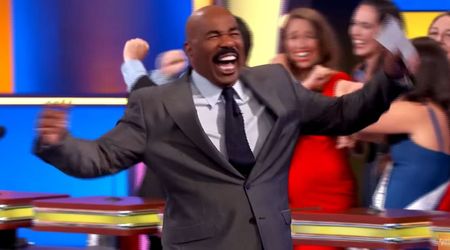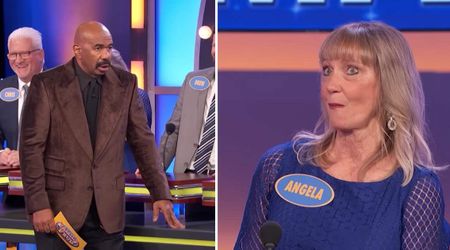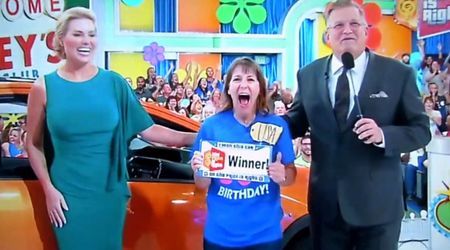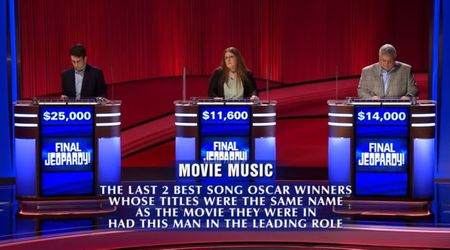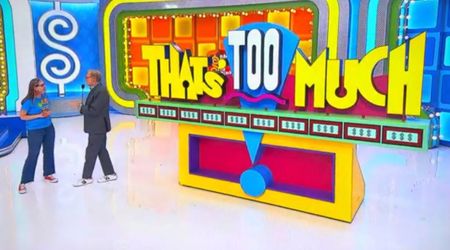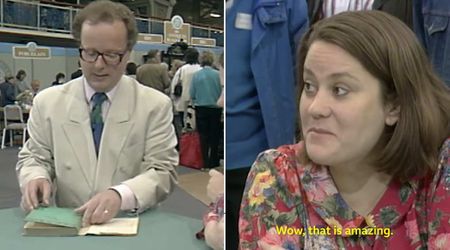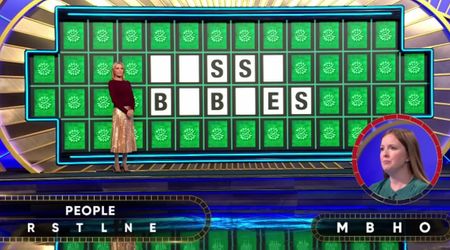From ‘Spectre’s’ Car Chase to ‘Ben-Hur’s’ Chariot Race, 10 Most Expensive Movie Scenes Ever Filmed

The Most Iconic Film Scenes Are Often the Costliest

It's often said that it's money, not the globe, that keeps the film industry spinning. Hollywood is a profit-generating juggernaut, capable of attracting vast audiences and yielding enormous earnings. In 2019, despite a 4.8 percent dip in North American box office figures from the prior year, the industry still raked in over $11 billion in revenue. However, crafting such captivating entertainment comes with a hefty price tag. For instance, releases from that year like "Avengers: Endgame" and the live-action "Lion King" commanded budgets of $356 million and $260 million respectively. On that note, let's look at the 10 costliest film sequences.
1. Times Square scene – "Vanilla Sky"

"Vanilla Sky" opens with a surreal and reality-challenging tone. It introduces us to David Aames, played by Tom Cruise, a wealthy playboy with impeccable grooming. The film's soundtrack, featuring Radiohead's "Everything In Its Right Place" mirrors David's seemingly perfect life. However, as David drives his vintage Ferrari through New York, the illusion starts to crumble. He heads to Times Square, a bustling area with around 330,000 daily visitors but to his surprise, it's completely empty. In a sudden awakening, David realizes it is all a dream, symbolizing his loneliness, according to his therapist. Despite its brief 30-second duration, this scene is pivotal, raising questions about reality and dreams. Interestingly, no CGI was used and instead, director Cameron Crowe secured permission from the NYPD to close Times Square for filming between 5 a.m. and 8 a.m. on a Sunday in November 2000. The result was a stunning 30-second sequence that came with a price tag of over $1 million, per Screen Rant.
2. Bridge collapse – "I Am Legend"

In "I Am Legend," Will Smith plays Dr. Robert Neville, a virologist searching for a cure for the Krippin Virus in post-apocalyptic New York City. Like "Vanilla Sky," the film uses empty streets to convey isolation, impacting its $150 million budget, notably for a key scene where Neville is separated from his family. This pivotal moment, shown in flashbacks as Neville copes with loneliness alongside his dog, Samantha involves the evacuation and quarantine of New York City. Neville's family attempts to escape via helicopter but faces tragedy when the military bombs the Brooklyn Bridge, causing its collapse and his family's death. This event becomes the driving force behind Neville's quest for redemption. While digital effects were used for the missile impact, the scenes depicting the city's evacuation were filmed over six nights with 1,000 extras, 14 government agencies, extensive lighting setups, and a crew of 250. Post-9/11 bureaucracy added $5 million to the project's costs, per The Looper.
3. Rome car chase – "Spectre"

When you think of James Bond, you probably picture luxury cars, along with villains, gadgets, and Bond girls. The iconic Aston Martin DB5, seen in seven films, is a key part of 007's identity. In "Spectre," the most recent Bond film, Daniel Craig drives the exclusive Aston Martin DB10, a car created just for the movie (or was it?). Despite its enormous budget (rumored to be between $300 and $350 million), "Spectre" set a record by allocating £24 million (about $32 million) of the budget for car destruction. Most of this cost came from losing seven out of the ten DB10s used, a disappointment for car enthusiasts. Gary Powell, the chief stunt coordinator, revealed that they wrecked "millions of pounds' worth" of vehicles in Rome. The DB10 raced through narrow Vatican streets at speeds of up to 110mph in a thrilling chase with a henchman driving a Jaguar C-X75. Although the exact cost for this scene remains undisclosed, it's noteworthy that destroying multiple DB10s was done in "one night for just four seconds of film," resulting in an exceptionally high cost per second of footage.
4. Return to Krypton – "Superman Returns"

Compared to destroying DB10s, Bryan Singer's "Superman Returns" had some remarkable expenses. The film aimed to bring back Kal-El's character onscreen nearly two decades after "Superman IV: The Quest For Peace." In one scene, Superman returns to Krypton, using elaborate CGI and a slower, more thoughtful sci-fi style. However, this tone clashed with the rest of the film, which had a lighter superhero vibe. As a result, Warner Bros. decided to cut this scene from the final movie. This was a bold decision, particularly financially. The production of the scene reportedly cost about $10 million (per IMDb), making it one of the most expensive sequences ever filmed and possibly the costliest deleted scene in film history. While "Superman Returns" received positive reviews, it didn't capture the audience's imagination, reflected in its disappointing worldwide box office earnings of $391 million, per Forbes.
5. Freeway chase – "The Matrix Reloaded"

In 2003, "The Matrix" sequel hit screens with double the budget. The Wachowskis opted for real stunts, building a fake freeway in California instead of using CGI. This massive set, stretching a mile and a half, set the stage for a heart-pounding chase scene involving Morpheus, Trinity, The Twins, and agents. Carrie-Anne Moss, overcoming a motorcycle fear, called it "dangerous." The sequence resulted in 20 minutes of mind-boggling action, one of cinema's most memorable car chases. While the exact cost remains undisclosed, the freeway alone set them back by $2.5 million, per The Independent. Coupled with over a hundred destroyed cars, practical effects, and CGI, a significant part of the $150 million budget went into this sequence.
6. D-Day landing – "Saving Private Ryan"

World War II, spanning six years, remains history's deadliest conflict with an estimated 56.4 million casualties. Among its chilling battles, the D-Day landing stands out as the largest seaborne invasion. In "Saving Private Ryan," Steven Spielberg's 1998 film, the Omaha Beach landing comes to life, considered one of cinema's greatest battle sequences. In this intense 25-minute portrayal, Captain Miller (Tom Hanks) faces insurmountable odds, immersing audiences in the tragic reality of June 6, 1944. Spielberg's direction, often spontaneous, captured the chaos authentically. Despite the scene's $12 million budget (per Esquire), its cultural impact makes it an outstanding investment in cinematic history.
7. Junkyard scene – "Transformers: The Last Knight"

Michael Bay, known for his explosive blockbusters like the "Transformers" series, has earned a colossal $4.48 billion globally. Despite "The Last Knight" receiving a paltry 15 percent rating on Rotten Tomatoes, it sported a hefty $217 million budget. A significant chunk of that went into a specific location: an Arizona junkyard. This choice aimed to maintain continuity from the previous "Transformers" film, "Age of Extinction." The 10-day shoot employed 40 locals, collaborated with 50 local vendors, and generated 3,000 hotel nights, tallying a $15 million investment (per Screen Rant) before accounting for CGI and other expenses.
8. Cruise ship crash – "Speed 2: Cruise Control"

In 1994's "Speed," LAPD officer Jack Traven (Keanu Reeves) must prevent a rigged bus from exploding if it drops below 50mph, with civilian Annie Porter (Sandra Bullock) aiding him. Bullock returned for "Speed 2: Cruise Control," where her character faces a ship disaster orchestrated by hacker John Geiger (Willem Dafoe). The standout scene in Jan de Bont's sequel is the ship's destructive collision with an idyllic town on Saint Martin Island, based on de Bont's recurring nightmare. They built a 300-ton replica of the ship on a 1,000-foot track extending into the ocean for realism, using digital effects from George Lucas' Industrial Light and Magic. Despite that, the five-minute scene cost $25 million (per The Richest), nearly matching the entire $30 million budget of the first film.
9. Chariot race – "Ben-Hur"

"Ben-Hur" is a monumental production, famously featuring a breathtaking nine-minute chariot race at its core. This 1959 adaptation of Lew Wallace's novel, following five years of preparation, showcased grandeur on an unprecedented scale. The production encompassed 300 sets sprawled across 148 acres, nine sound stages, and a multitude of extras. Located at Cinecittà Studios in Italy, it boasted the largest film set of its time, notably the arena in the ancient city of Antioch, constructed by 750 workers for the iconic race between Judah Ben-Hur (Charlton Heston) and Messala (Stephen Boyd). Filming this scene spanned 10 weeks and cost a staggering $4 million (per World of Reel), equivalent to over $34 million today, approximately $3.7 million per minute of footage. Despite the substantial investment, "Ben-Hur" remains one of the highest-grossing films ever (adjusted for inflation), a testament to the allure of cinematic extravagance.
10. Battle of Borodino – "War and Peace"

Sergei Bondarchuk's adaptation of Leo Tolstoy's "War and Peace" is a cinematic epic. This four-part series, released from 1966 to 1967, holds the title of the most expensive Soviet film, with a price tag of $100 million at the time, equivalent to over $700 million today. One of the director's greatest challenges was depicting the Battle of Borodino during Napoleon's 1812 invasion of Russia, without the luxury of modern CGI. The resulting hour-long battle scene featured extensive pyrotechnics, props, costumes, and over 100,000 Red Army troops as extras. While the exact cost remains undisclosed, if you divide the total budget by the series' seven-hour runtime, this single hour would account for $100 million (per The Seattle Times) when adjusted for inflation.
